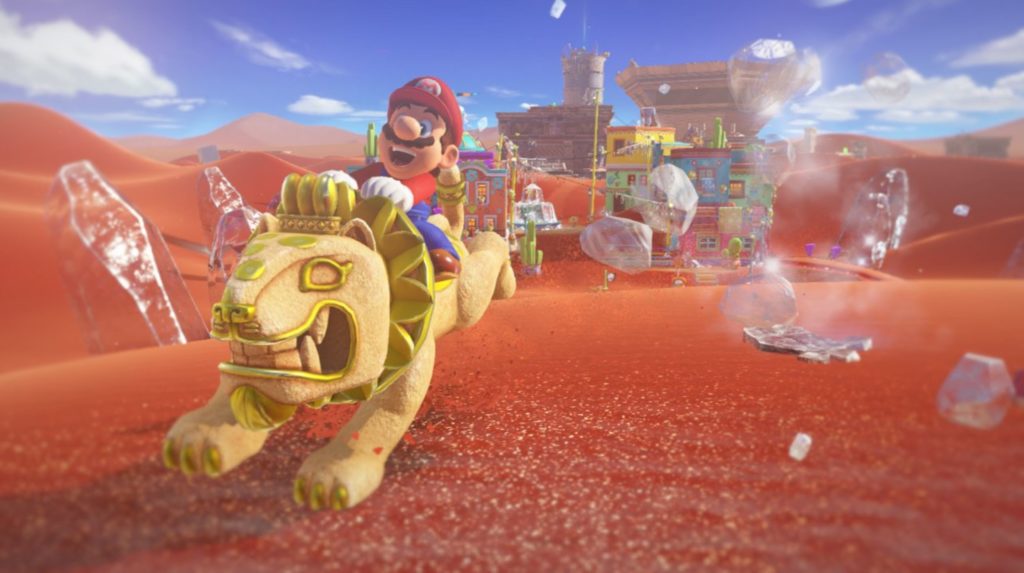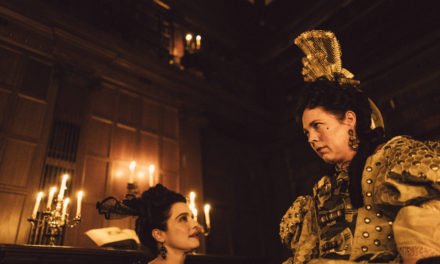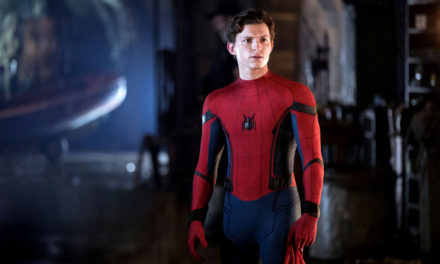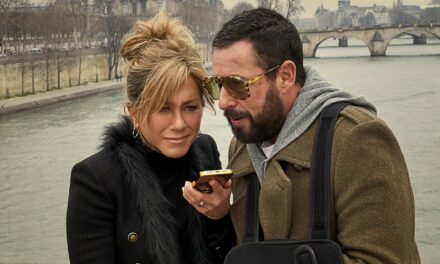In 1981, Nintendo released a game called “Donkey Kong” that featured a man dressed in red, whom the company christened Jumpman. Despite the technical limitations of gaming hardware at the time, the game shined due to the polish of its core mechanic: jumping.
If there was a moving platform you needed to reach, you would jump at the perfect time and land on it. If there was an enemy you needed to kill, you would jump as it is approached you. Through one simple yet nuanced concept, the simple platformer became the most cherished and beloved franchise in gaming.
Fast forward 36 years later and we have “Super Mario Odyssey,” a game that plays so spectacularly because it boldly attempts to recreate the jump. Don’t misunderstand, our favorite plumber can jump better than ever before, but with the introduction of his new companion Cappy — a spirit that lives in Mario’s signature red cap — the Super Mario series has received a new mechanism that turns the cherished platformer completely on its head.
Players can throw Cappy and use him as a projectile. More creative players can even use him as an additional platform to give their jump a slight boost. The biggest tool that Cappy provides is his possession ability. If you throw him onto most enemies and some non-player characters (NPCs) in the game, you can adopt their powers. Throwing Cappy onto a frog gives your jump an extra oomph, while throwing him onto a tank gives you enough firepower to blast through walls. It’s a stream of endless possibilities that make even the most banal areas in the game come to life as you contemplate which enemies you can take control of.
Cappy embodies the freedom that players are granted in “Super Mario Odyssey.” Through each player’s possession and jump capabilities, the world is infinite in scope, housing countless possibilities underneath Cappy’s simple and easy-to-use mechanics.
I appreciated this early in my runthrough when I tested Mario’s jumping abilities in a small dungeon in the Sand Kingdom, where I leaped and backflipped everywhere like a member of the circus. To my surprise, I ended up on a platform I initially thought was unreachable and won some coins for my effort. While the reward wasn’t spectacular, it was still satisfying, as if an approving pat on the back from Nintendo. Little quirks and possibilities like that add up to the game’s nuanced level of design and mechanics.
More than anything, Nintendo has nailed how fun it is to just move around as Mario. The inclusion of long jumps and rolling makes traversing the various maps quick and fun. I found myself leaping and tumbling through spots of the open world for no reason, enjoying the fluidity of the movement mechanics and the funny way Mario says “woo hoo” whenever he makes a long jump.
The Super Mario series does not tend to deviate from its focus on gameplay, and “Super Mario Odyssey” does not subvert that trend in any way. While most players appreciate this focus, it leads to a standard, bland Mario game plot. Bowser has — prepare yourself for this wild twist — kidnapped Princess Peach and is trying to marry her. It is Mario’s job to rescue Princess Peach and stop the wedding.
Also, if you save 1,000 coins and buy the boxers from any of the stores in the game, you are rewarded with a splendid view of a topless Mario. Bask in the glory of his bare nipples for this is their first appearance in any Mario game. This is about as revolutionary as the game gets when it comes to the story.
Though the gameplay takes center stage in the qualities that make “Super Mario Odyssey” a revolutionary game for the series, the experience is made better by the gorgeous design. Every kingdom in “Super Mario Odyssey” feels rich and unique, from the colourful, detailed dunes of the Sand Kingdom to the bizarrely realistic design of New Donk City, a faithful reinterpretation of New York City.
The atmosphere of each zany world is made more animated by the game’s fantastic soundtrack. The heavy jazz inspiration of New Donk City’s theme, with its glaring saxophone riff and tight, underlying electric guitar accompaniment, helps immerse the player in the metropolitan air of the world, while the jumpy, minimalist guitar riff of the Wooded Kingdom with its loud snares fills the player with a muted excitement that makes travelling the mysterious and placid world a sublime experience. None of the musical loops are particularly long, making the songs even more catchy than they already are, adding to the repetitive fun of blindly jumping around a map for hours on end.
“Super Mario Odyssey” is a success because it brings something new to the Mario franchise without totally subverting the philosophy behind the original game. “Donkey Kong” and every subsequent Mario title has been, at heart, a platformer, and “Super Mario Odyssey” is without hesitation the finest platforming experience Nintendo has ever produced, making even the simplest of jumps in the game a joy to pull off. The complexity behind the game mechanics coupled with the gorgeous world design and atmospheric soundtrack makes “Super Mario Odyssey” an impossible game to put down and a must-have for any Nintendo Switch owner.
Chapeau, Nintendo.
Grade: A
Associate Editor | avpraka@emory.edu
Aditya Prakash (20C) is from Dubai, United Arab Emirates, pursuing a double major in neuroscience and behavioral biology and philosophy. He enjoys playing 16-bit indie games and arguing for his pronunciation of the word schedule. He half-jokingly aims to one day join The Onion or Clickhole, but until then he will continue to serve the Wheel.






